Something that gets brought up occasionally around here is that so-called "pipe repair" is a spectrum that runs from only restoring functionality without regard for appearance, to making a pipe look literally new again. Meaning, if the repaired pipe was sent back in time and dropped onto the appropriate output table the year it was originally made, the inspector Q/A guy wouldn't realize it was a time traveller, and would green light it.
Another test---applicable in the case of historical collectables---would be to have it declared authentic by an expert.
This 1967 Dunhill EC is an example of the latter. The original stem was badly oxidized and chewed, but the stummel was in good condition (under a layer of carbon and grime, of course) and it was an excellent full coverage sandblast specimen. (It's rare-ish to find a Shell with a good, deep blast that doesn't distort the pipe's lines.)
It was worth getting back into new condition, in other words, complete with "undetectable counterfeit-grade" stem.
The "EC" shape stands for "Extra Cool" or "Extra Classy", of course...
For anyone starting out in stem-making the photo with the ruler is for you. Don't go there.

 Really small stems are as extra-difficult as really large ones. This one is only 1.32" long, with a .22" tenon. It's like working with a stem-shaped postage stamp.
Really small stems are as extra-difficult as really large ones. This one is only 1.32" long, with a .22" tenon. It's like working with a stem-shaped postage stamp.
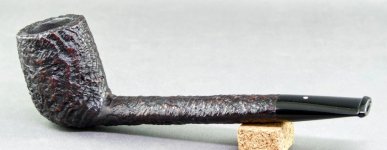
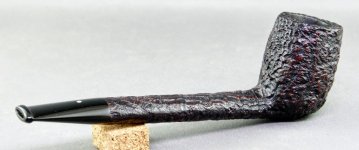
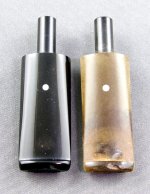


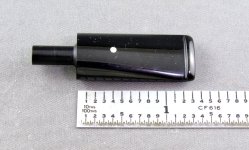
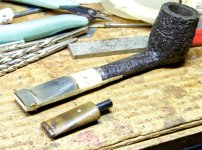

Another test---applicable in the case of historical collectables---would be to have it declared authentic by an expert.
This 1967 Dunhill EC is an example of the latter. The original stem was badly oxidized and chewed, but the stummel was in good condition (under a layer of carbon and grime, of course) and it was an excellent full coverage sandblast specimen. (It's rare-ish to find a Shell with a good, deep blast that doesn't distort the pipe's lines.)
It was worth getting back into new condition, in other words, complete with "undetectable counterfeit-grade" stem.
The "EC" shape stands for "Extra Cool" or "Extra Classy", of course...
For anyone starting out in stem-making the photo with the ruler is for you. Don't go there.








Last edited:










